100 Sewing Tools and Equipment for Beginner and Advanced Sewists
Learning to sew can feel daunting with the array of sewing tools and equipments at your disposal. Despite the multitude of options, focusing on the essentials outlined in this guide can streamline your sewing journey. While some sewing tools are crucial, others serve as enjoyable, discretionary items that you can obtain at a later time.
Rather than feeling overwhelmed by the influx of new items, let’s explore these common sewing tools and their functions together. From measuring and cutting to stitching and trimming, here’s a rundown of the must-have tools for every sewer’s arsenal.
Note: Thanks to the overwhelming response to this article and requests to provide links to recommended products, we’ve created a storefront that lists our favorite (tested) products. This will save you time from comparing 100s of brands and you can be sure these recommendations are tried and tested.
Basic Sewing Kit
A good starting point is assembling a basic sewing kit (if you don’t want to put one together, we recommend this ready-to-go 251 pieces basic sewing kit). Prioritize getting these fundamental sewing tools before investing in additional accessories, and ensure you master their proper usage. These essentials will serve as your foundation, guiding you through sewing lessons and beginner-friendly projects. Here’s what you’ll need:

- Thimble: Protects your finger when hand sewing. This clever device resembles a bucket and is crafted to safeguard your finger while pushing a needle through layers of fabric. [Get 2 thimbles as part of this sewing kit]
- Tape Measure: Essential for taking measurements and sizing up fabric. [Get 1 piece of 60 inches tape measure with this kit]
- Zippers: Crucial for efficient fastening and closure in clothing and accessories. Keep a few handy in versatile colors like black, cream, and navy. [Get 60 yards 20 piece zippers bulk]
- Haberdashery: Keep a few buttons, snaps, and elastics in hand for those finishing touches. [Get your haberdashery stash in this kit]
- Fabric Scissors: To trim your fabric. It’s recommended to begin with a high-quality, sharp pair. [Get the scissors bundle including fabric scissors]
- Seam Ripper: Helps fix any stitching mistakes quickly. Using scissors to rip a seam can potentially harm the fabric. A seam ripper, on the other hand, is specifically crafted to glide between fabric layers and precisely cut the thread without causing damage. [Get Singer Set of 3 Seam Rippers]
- Pin Cushion: Keeps your needles and pins organized and easy to reach. [Shop 216 pieces Pin Cushion Set]
- Sewing Gauge: Handy for measuring small details like hems and buttonholes.
- Cutting Shears: Essential for cutting fabric cleanly and accurately. [Get the scissors bundle including cutting shears]
- Buttonhole Chisel: Gives a clean cut through machine buttonholes.
- Safety Pins: Great for quick fixes and threading elastics. [Get safety pins in this sewing kit]
- Pins: Holds fabric in place before sewing. Standard pins are suitable for general use, but when working with silk, opt for the finest pins to prevent creating permanent holes in the delicate fabric. [Shop 216 pieces Pin Cushion Set]
- Threads: Stock up on various colors for both hand and machine sewing. [Shop high quality All Purpose Thread]
- Needles: Stock up on a variety of different types for both hand and machine sewing projects. [Shop hand sewing needles and machine needles]
Cutting Tools
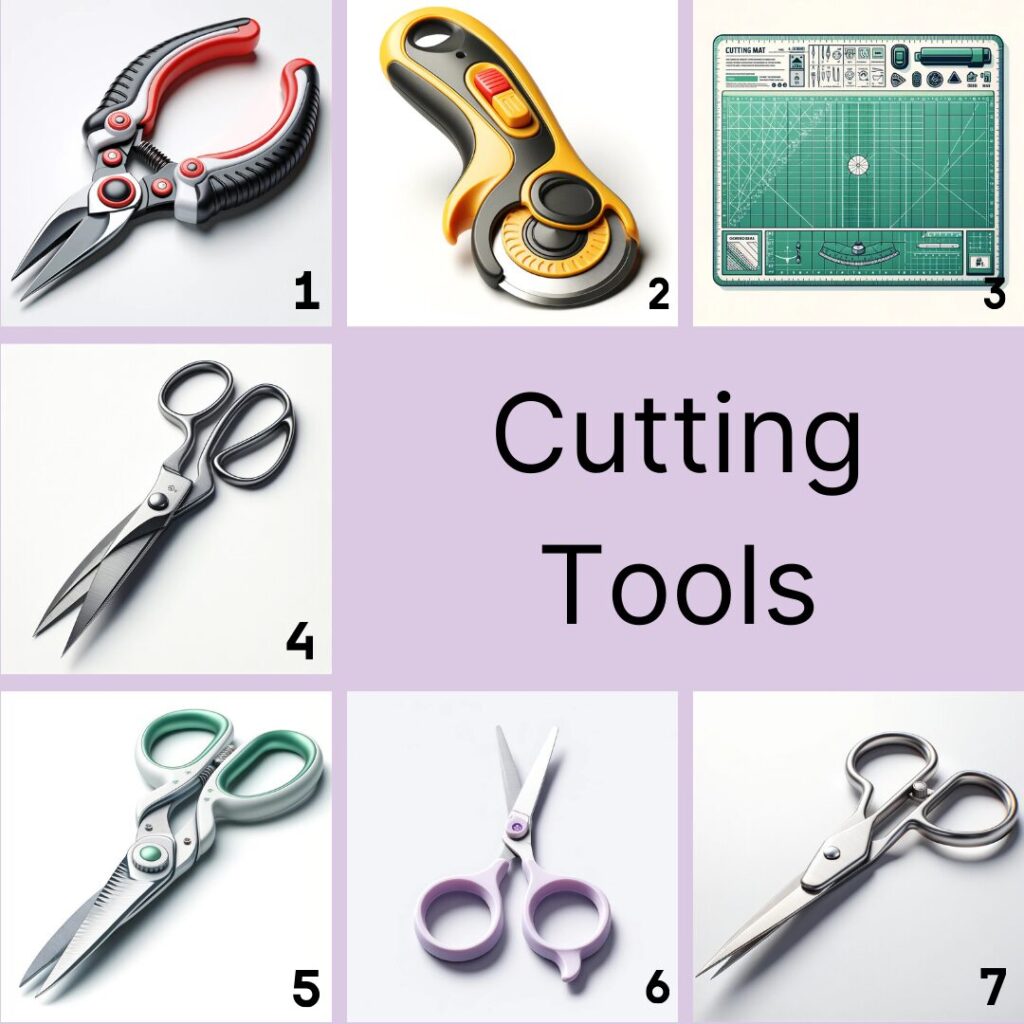
Quality cutting tools are a game-changer. Cutting tools in a sewing kit often consist of fabric scissors, pinking shears for preventing fraying, and small thread snippers for precision cutting. Here are some essentials:
- Snips: Perfect for cutting thread ends. [Get thread snips in this set]
- Rotary Cutter: Ideal for cutting multiple layers of fabric with precision. [Get rotary cutter and cutting mat]
- Cutting Mat: Protects surfaces and blades when using rotary cutters. [Get rotary cutter and cutting mat]
- Bent-Handled Shears: Great for cutting long, straight edges comfortably. With a bent lower blade, they ensure the blades remain parallel to the table while cutting fabric, providing greater cutting precision. [Get the scissors bundle]
- Pinking Shears: Feature saw-tooth blades created to trim the edges of woven fabrics in a zigzag pattern, reducing excessive fraying. If you lack a serger or overlock machine, pinking shears can serve as an alternative. [Get the scissors bundle including pinking shears]
- Trimming Scissors: Trims excess fabric and tidies up machining ends. [Get the scissors bundle including trimming scissors]
- Paper Scissors: Specifically for cutting pattern pieces to avoid dulling your regular fabric scissors. [Get paper scissors with this kit]
Measuring Tools for Sewing

Here are some sewing tools designed for measuring. If you’re serious about starting your sewing journey, it might be beneficial to consider investing in a few of these tools.
- Tape Measure: This trusty companion is a must-have in every sewing kit. Whether you’re determining the length of a seam or taking body measurements, a reliable tape measure is your go-to tool. Just remember to keep it in tip-top shape to maintain accuracy.
- Metal Tape for Windows: When crafting soft furnishings or curtains, a metal tape comes to the rescue. Its ability to secure when extended makes measuring windows a breeze.
- Flexible Ruler: Say goodbye to struggles with curved shapes or armholes. A flexible ruler offers the flexibility needed for precise measurements in tricky spots.
- Sewing Gauge: Perfect for those meticulous tasks requiring small measurements, like hems. This handy tool, marked in inches and centimeters, with a sliding tab, ensures accuracy in every detail.
- Extra-Long Tape: For those larger-than-life projects, like bridal trains or expansive soft furnishings, an extra-long tape measuring 10 feet is a game-changer.
- Retractable Tape: Compact and convenient, this tape measure is a handy companion for on-the-go measuring needs.
- Clear Ruler: A clear ruler is extremely useful for drafting patterns and incorporating seam allowances.
- Gridded Ruler: Paired with a rotary cutter and mat, this ruler marked with an inch or centimeter grid becomes your best friend for precision cutting and marking bias strips.
Marking Aids for Sewing
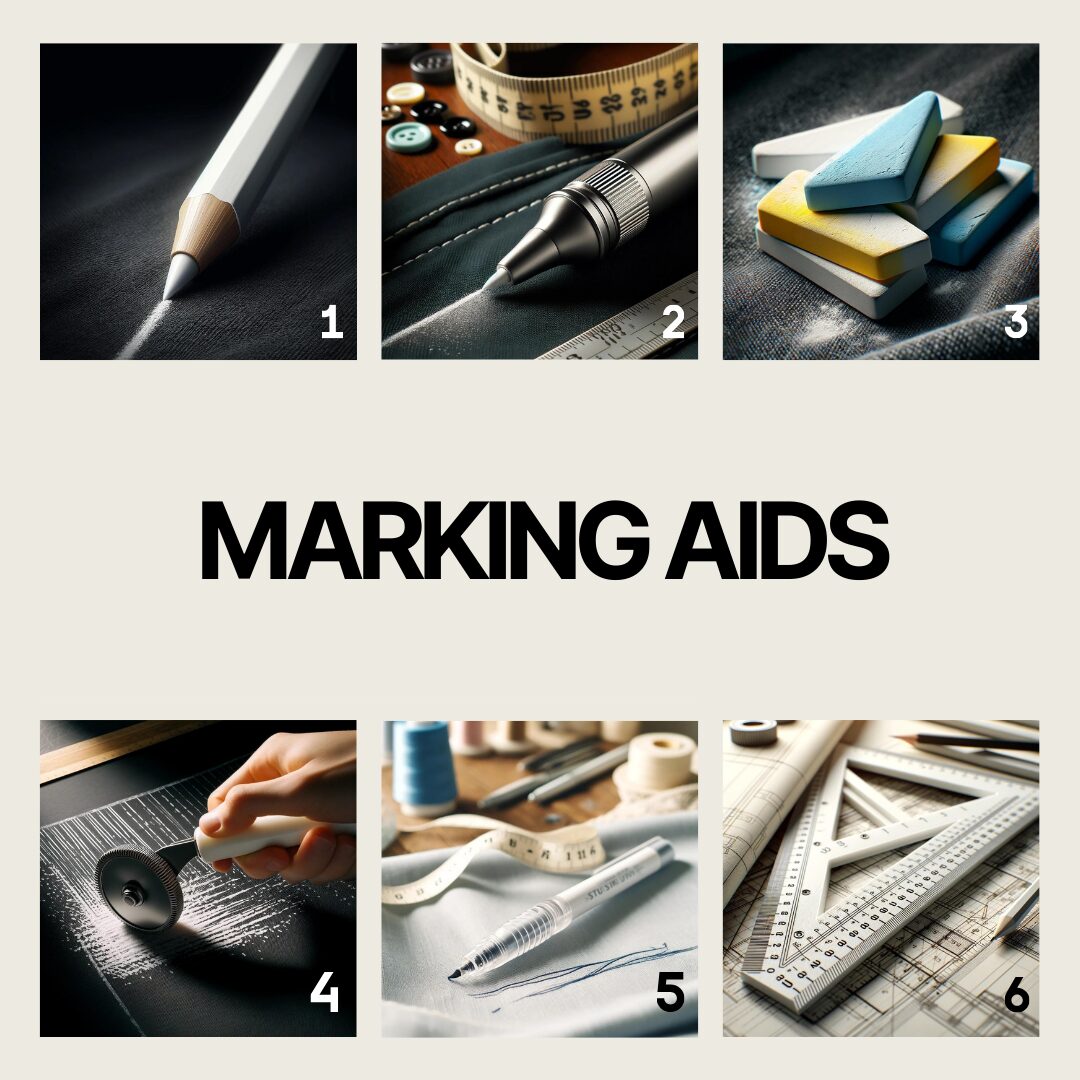
Need to make marks without causing harm to your fabric? The following collection of marking tools is beneficial for various projects.
- Chalk Pencil: Available in various colors, this sharpenable pencil ensures accurate lines on fabric, making it a valuable addition to your marking toolkit.
- Chalk Propelling Pencil: A pencil-like tool filled with chalk, used for precise marking on fabric in sewing projects for temporary guidelines. Swap out chalk leads of different colors to suit your fabric, and sharpen them for crisp, accurate lines.
- Tailor’s Chalk: A classic staple in sewing, tailor’s chalk comes in various colors and shapes, ensuring clear markings that easily brush off fabric when no longer needed. This chalk allows you to transfer stitch lines, darts, and other markings from your pattern onto your fabric.
- Tracing Wheel and Carbon Paper: Transfer markings from paper patterns to fabric with ease using this duo. Remember to test on a scrap of fabric to ensure suitability and easy removal of marks.
- Water/Air-Soluble Pen: Effortlessly mark fabric with this felt marker-like pen. Removal is a breeze with either a spritz of water or air-drying, but beware of making the marks permanent with excessive pressure.
- Drafting Ruler: When precision is paramount in drafting or altering patterns, reach for this curved tool, also known as a pattern marking ruler.
Sewing Tools and Equipment: Essential Add-Ons

These additional tools facilitate precise measurements, neat seams, and easier handling of fabrics.
- Emergency Sewing Kit: This kit has all the essentials for quick fixes, like loose buttons or unexpected hems. Perfect for sewing on the go!
- Awl: Need to make holes for eyelets or buttonholes? Look no further than a sewing awl.
- Tweezers: Ever had a stubborn stitch that just won’t budge? Tweezers are here to save the day! They’re also great for threading your serger like a pro.
- Loop Turner: Imagine a tiny metal rod with a latch at the end. That’s your loop turner! Perfect for turning fabric tubes or threading ribbons through lace.
- Glue Stick: Just like a glue stick for paper, this one is for fabric. It’s like a temporary solution, holding fabric or trims in place until you stitch them up.
- Bias Tape Maker: Say hello to your new best friend for neat edges! This tool folds fabric strips evenly, so you can press them into perfect binding.
- Dressmaker’s Mannequin: This adjustable form helps you fit garments like a pro and makes turning up hemlines a breeze. Plus, it comes in all shapes and sizes for your every sewing need.
- Collar Point Turner: Tired of struggling with collar corners? This nifty tool is here to save the day! Say goodbye to pesky corners and hello to smooth edges.
- Pliers: These are specially designed tools used to attach grommets, metal snaps, or rivets with ease and precision.
- Pattern Paper: Use it for drafting patterns, altering designs, or tracing your next masterpiece. With dots and crosses for guidance, it’s like having a sewing GPS!
- Beeswax: Beeswax keeps your thread from tangling and gives it extra strength. Just rub it on your thread, and you’re good to go.
- Liquid Sealant: Bid farewell to fraying with this tool. Seal the cut edges of ribbons and trims, or lock in serger stitching with ease.
Pins

Sewing pins play a crucial role in temporarily securing fabric during sewing projects. They are available in a variety of sizes and diameters to accommodate various fabrics and tasks. You can select the appropriate type from the options provided below to match your specific project needs.
- Straight Pin: A slender, pointed metal pin with a flat head used in sewing to temporarily hold fabric pieces together securely.
- Safety Pin: A hinged metal pin with a catch to hold the pointed end safely, often used for temporary fastening in sewing.
- Quilting Pin: A longer, thicker pin designed specifically for quilting, with a flat head for easy manipulation and secure fabric holding.
- Pearl-headed Pin: A sewing pin with a round, decorative pearl-like head, adding elegance while securely holding fabric pieces together during sewing projects.
- Lace or Bridal Pin: A specialized pin with a decorative head, often adorned with pearls or crystals, used for delicate fabrics like lace or bridal attire.
- Flowerhead Pin: A sewing pin with a decorative flower-shaped head, combining functionality with aesthetic appeal for pinning fabrics during sewing projects.
- Dressmaker’s Pin: A long, slender pin used by dressmakers for securing fabric layers together during garment construction, featuring a sharp point and small head.
- Extra Fine Pin: An ultra-thin sewing pin with a delicate point, ideal for fine fabrics and intricate sewing projects requiring precision and accuracy.
- Glass-headed Pin: A sewing pin with a glass bead head, providing durability and ease of handling.
Needles and Threads
Picture this: you’re all set to sew a beautiful garment, but wait! Are you using the right needle and thread? Choosing the correct ones is crucial to prevent fabric damage and ensure seamless stitching. Let’s have a detailed look below into the different types of needles and threads.
Needles
Needles come in various shapes and sizes to suit different fabrics and projects. From emergency repairs to intricate embroidery, there’s a needle for every task. However, hand sewing needles differ from sewing machine needles. If your sewing machine needle breaks, you cannot substitute it with a hand needle, and vice versa. Each needle is designed differently and intended for specific sewing methods, as explained below.
Hand Sewing Needles
Hand sewing needles are available in various sizes and sharpness levels, with different-sized eye holes for accommodating thinner or thicker threads. They are lightweight and have a simple design.
In the image below, you can see the different parts of a hand sewing needle.
(Image source: Allfreesewing)
Unlike machine sewing needles, the eyes of hand sewing needles are positioned differently. To thread the needle, you pass the thread through the eye, located at the top, and the point of the needle is at the opposite end. After threading, you push the needle point through the fabric and then back up to stitch.
Common types of hand sewing needles include general purpose, ballpoint, beading, darning, chenille, doll, milliners, leather, embroidery, quilting, upholstery, and tapestry.
Sewing Machine Needles
Unlike hand sewing needles, the eye of sewing machine needles is located near the point of the needle. In the image below, you’ll notice that the end opposite the point is thicker compared to hand sewing needles, allowing the needle to be properly inserted into the machine.
Sewing machine needles have a specific shape and are securely clicked into place within the machine. It’s important to note that not all sewing machine needles are compatible with all machines; for instance, machines without a zigzag stitch feature cannot accommodate twin or triple needles.
Common types of sewing machine needles include universal, ballpoint, sharp, stretch, embroidery, quilting, denim, hemstitch, metallica, leather/wedge-point, twin, triple, and topstitch.
Needle Types
These are the prevalent and typical varieties of hand sewing needles and sewing machine needles available:
- Universal Needles

(Amazon)
A versatile needle for various projects, used for machine sewing. The universal needle features a slightly rounded point, making it suitable for sewing woven fabrics and thicker knits.
- Ballpoint Needles
(Source)
Used for both hand and machine sewing. These needles feature a rounded tip rather than a sharp point, making them perfect for sewing knit fabrics, such as jersey. The rounded tip allows the needle to glide between the fibers instead of piercing them, preventing damage to the fabric.
- Stretch Needles

(Source)
The stretch needle is slender and elongated for flexible fabrics. It’s specifically crafted for sewing elastic knits like spandex, swimsuit fabric, and synthetic suede.
- Denim/Jeans Needles

(Source)
Denim/jeans needles are intended for sewing denim and other heavy fabrics. They feature a medium ballpoint and a reinforced blade, allowing them to effortlessly pierce through thicker layers of fabric.
- Leather Needles

(Amazon)
Used for both hand and machine sewing. These needles have a chiseled point designed to effortlessly cut through thick materials like leather, suede, vinyl, and similar fabrics. They are also suitable for use with imitation leather.
- Beading Needles

(Amazon)
Used for hand sewing. This needle is long and slender, specifically for sewing sequins, beads, pearls, and similar embellishments. Its thin eye allows it to pass through smaller bead heads easily. Due to its delicate nature, it’s recommended to use this needle for sewing on thinner fabrics.
- Quilting Needles

(Source)
Used for both hand and machine sewing. This needle is compact yet sharp and elongated, allowing it to penetrate multiple layers of fabric efficiently. It’s particularly well-suited for quilting due to the inconspicuous, small holes it creates as it moves through the layers.
- Chenille Needles

(Amazon)
Used for hand sewing. This larger needle boasts an extremely sharp point. Chenille needles are mainly employed for embellishing sewing projects, especially heavy fabrics. While resembling a tapestry needle, the chenille needle distinguishes itself with its sharper tip.
- Darning Needles

(Source)
Used for hand sewing. These needles are utilized for darning, featuring long eyes, sharp points, and longer lengths to facilitate the darning process.
- Doll Needles

(Source)
Used for hand sewing. These needles are extremely thin and sharp, typically employed for sculpting doll features on doll projects.
- Embroidery Needles

(Amazon)
Used for both hand and machine sewing. These needles are long and thick, featuring large eyes to accommodate thicker decorative threads, which are commonly used in sewing projects requiring embellishment.
- Hemstitch Needles

(Source)
Used for machine sewing. These needles produce minuscule holes in the fabric during sewing and are best suited for use with natural fibers.
- Upholstery Needles

(Amazon)
Used for hand sewing. These needles are typically long, thick, and sometimes curved. The curved shape allows them to access challenging areas for sewing.
- Straight Point Needles

(Source)
Used for both hand and machine sewing. Commonly referred to as sharp needles, these are versatile needles suitable for most projects. Their small, sharp design ensures minimal visibility of needle holes compared to larger points, making them ideal for various sewing tasks.
- Tapestry Needles
(Amazon)
Used for hand sewing. This type of sewing needle, characterized by its large eye and blunt point, is ideal for adding decorative embellishments to your projects.
- Topstitching Needles

(Source)
Used for machine sewing. This special needle is specifically designed for surface stitching. It features an exceptionally sharp point, along with a large groove and eye, allowing it to securely hold thick topstitching threads during the stitching process.
- Twin Needles

(Amazon)
Used for machine sewing. These special dual needles, also known as double needles, are attachments for sewing machines. They are utilized for tasks, such as hemming, topstitching, heirloom sewing, and other decorative stitching purposes.
- Triple Needles

(Source)
Used for machine sewing. These needles are similar to twin needles, but they feature three needle shafts instead, allowing for even more decorative options and versatile hemming capabilities.
- Yarn Needles

(Amazon)
Used for hand sewing. These needles are broad and blunt with large eyes, specifically designed for knitting projects. They are ideal for sewing yarn in crochet, knitting, and similar needlework projects.
Threaders

(Source)
Threaders assist threading needles by guiding thread through the needle’s eye, simplifying the process. With handy needle threaders, threading needles becomes a breeze!
- Bodkin: A bodkin is a blunt, pointed tool used to thread elastic, ribbon, or cords through casings or fabric channels.
- Self-threading Needle: A self-threading needle simplifies threading with its double eye design, making it effortless to insert thread.
- Wire Needle Threader: A wire needle threader aids threading small-eyed needles by guiding thread through the needle’s eye.
- Automatic Needle Threader: An automatic needle threader seamlessly threads needles using a small lever mechanism, simplifying the threading process with minimal effort.
Threads
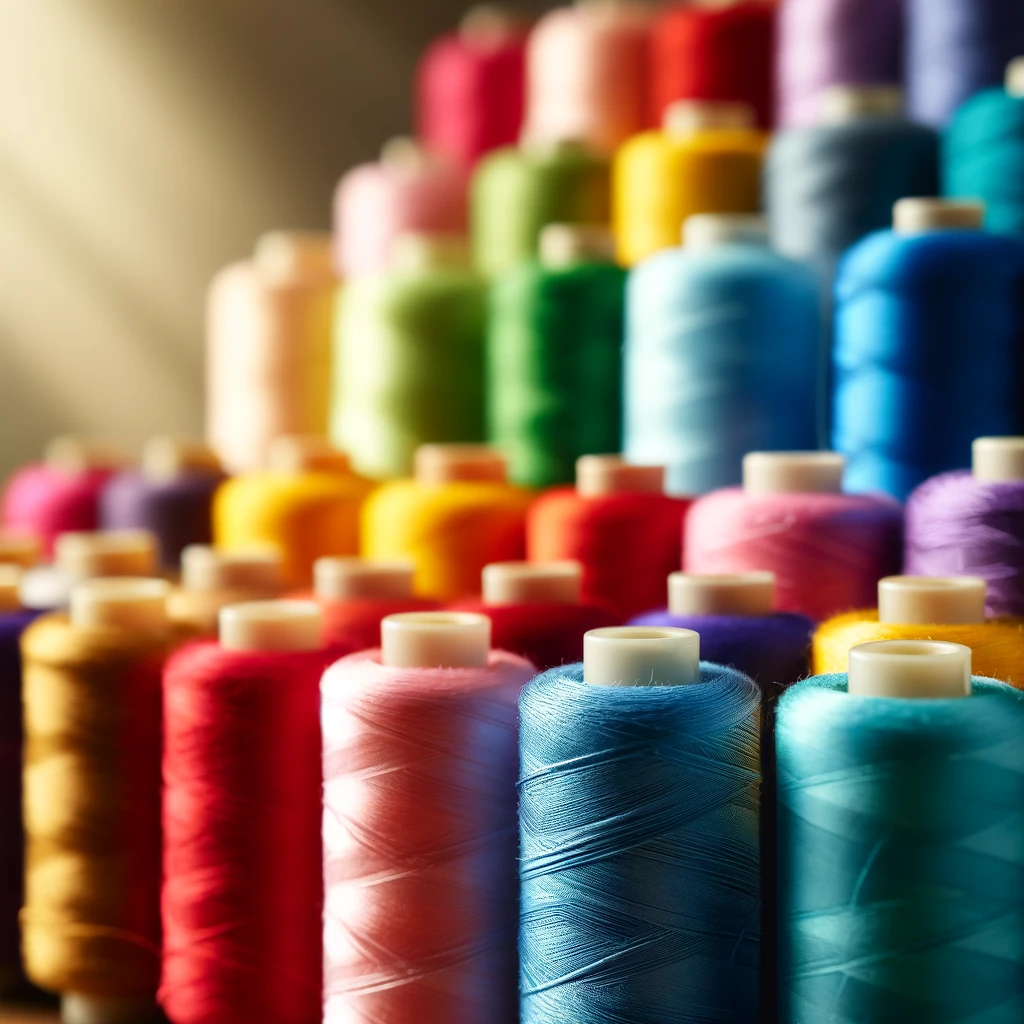
Now, let’s talk about threads! With a plethora of options available, choosing the right one can be overwhelming. But fear not, we’re here to guide you through the thread maze.
- Cotton Thread: Natural, versatile, and strong, ideal for everyday sewing projects, quilting, and crafting due to its durability and absorbency.
- Polyester All-purpose Thread: Synthetic, durable, and versatile, suitable for a wide range of fabrics, offering strength and colorfastness.
- Button Thread: Extra strong and thick, designed for securely attaching buttons and other fasteners, and even top-stitching.
- Silk Thread: Luxurious, fine, and delicate, perfect for delicate fabrics, embroidery, and high-end sewing projects, offering a smooth finish. Also great for temporary stitching as the thread is removable.
- Elastic Thread: Stretchy and flexible, used for sewing elasticated fabrics and creating shirring or gathering effects in garments.
- Serger Thread: Strong and durable, designed for overlock stitching on serger machines, providing secure and professional-looking seams for garments.
- Embroidery Thread: Vibrant, silky, and smooth, specially designed for decorative stitching, embellishments, and intricate embroidery designs on various fabrics.
- Metallic Thread: Shiny and decorative, adds sparkle and glamor to embroidery, quilting, and decorative stitching projects for a dazzling finish.
Haberdashery Items
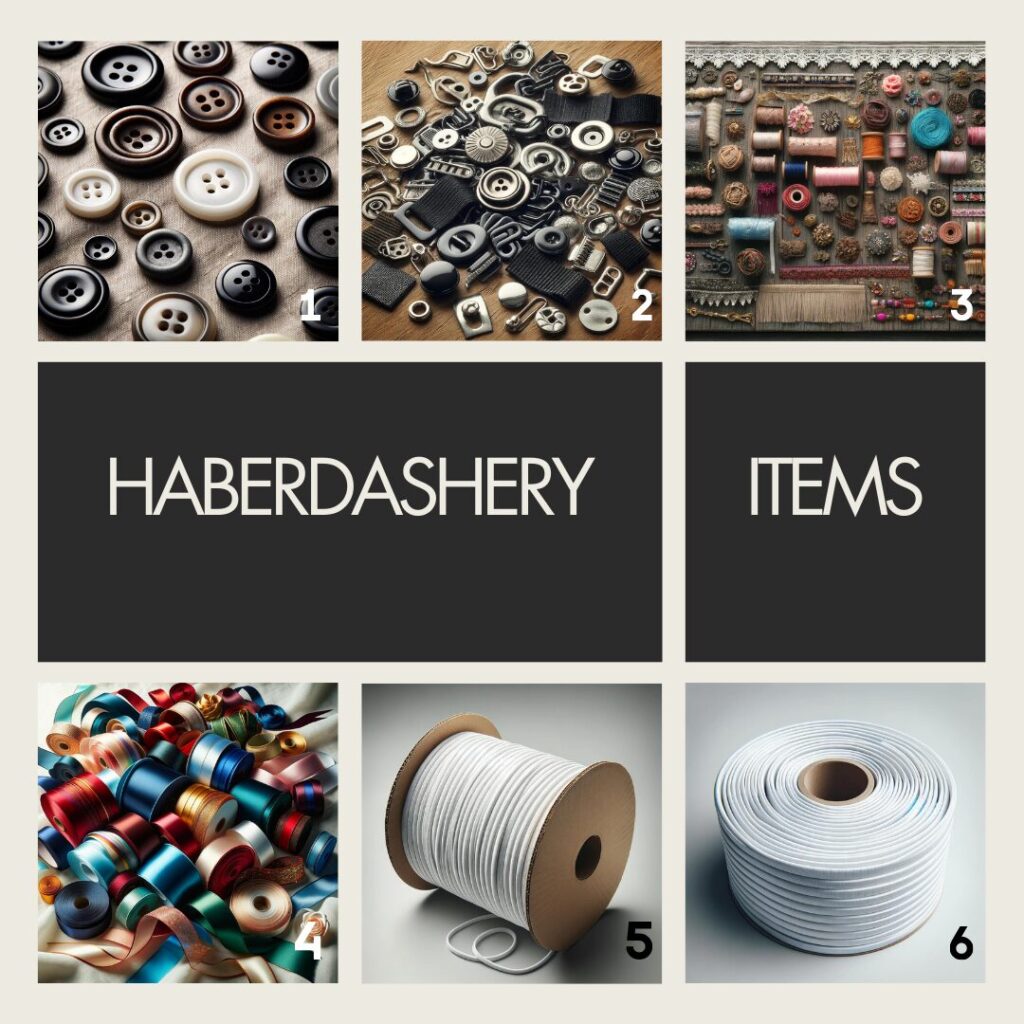
Think of haberdashery as your sewing stash’s best friend. From buttons and fasteners to trims and boning, these are the unsung heroes of the sewing world.
- Buttons: Buttons come in all shapes, sizes, and materials imaginable. Whether you prefer classic brass or quirky coconut, there’s a button for every project. Some buttons have shanks, while others boast handy little holes for easy attachment.
- Other Fasteners: Hooks and eyes, snaps, and Velcro™ are the typical fasteners used for garment closure. They come in a plethora of styles and colors, ensuring your fastenings are as stylish as they are secure.
- Trims, Decorations, Fringes, and Braids: Add a touch of personality to your creations with decorative flourishes like fringes, sequins, feathers, and beads. These little details can elevate a simple garment to a stunning masterpiece.
- Ribbons: Whether you’re tying bows or adding delicate accents, ribbons are a versatile addition to any sewing project. With options ranging from printed to plain, there’s a ribbon for every aesthetic.
- Elastic: From skinny cords to wide bands, elastic is a must-have for garments that need a little stretch. Whether you opt for functional buttonhole slots or decorative edges, elastic adds both form and function.
- Boning: Give your garments structure and support with boning. Whether you’re crafting a corset or a bodice, there’s a type of boning to suit your needs, from flexible polyester to sturdy metal.
Ironing Accessories
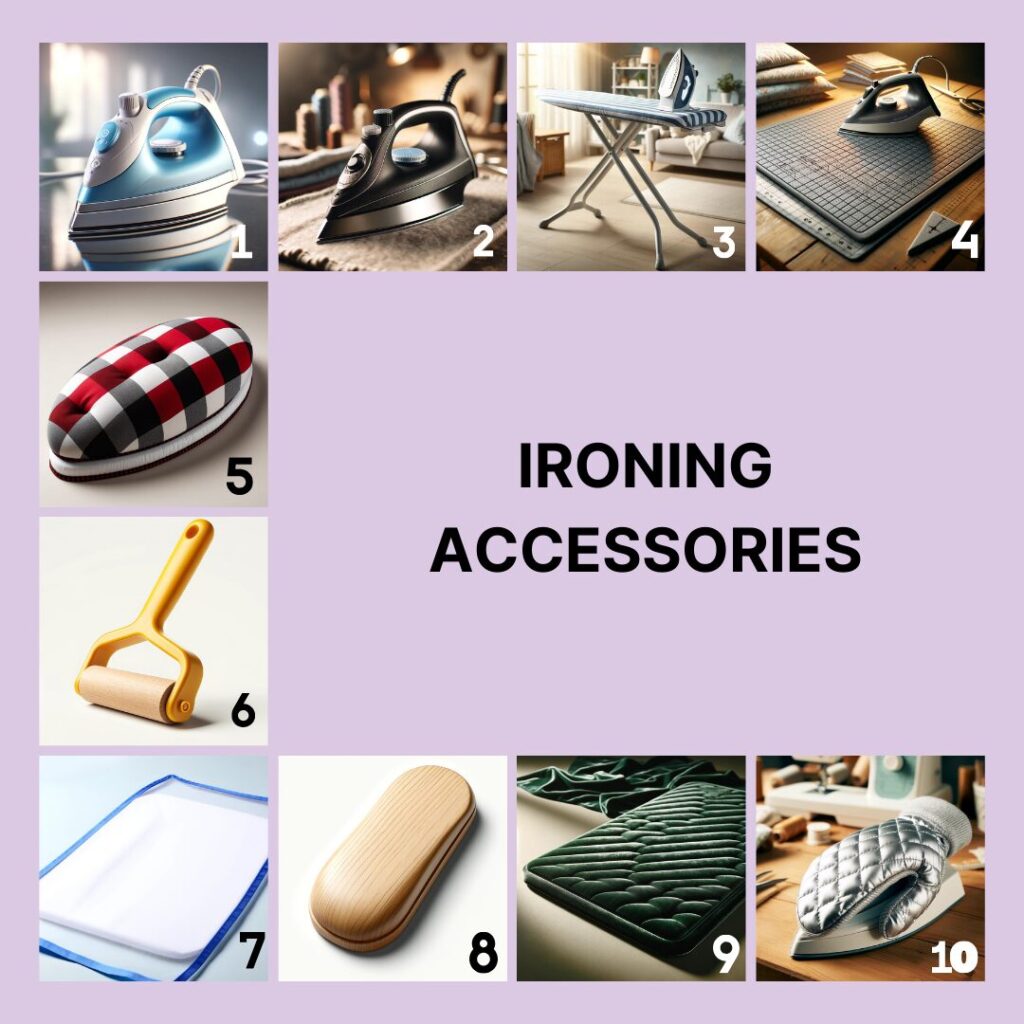
A well-pressed seam can take your sewing from amateur to professional in an instant. These ironing accessories are the secret weapons for achieving crisp, clean lines and professional-looking finishes.
- Mini Iron: Perfect for tackling tight corners and delicate gathers, a mini iron is a handy tool for precision pressing.
- Iron: Invest in a good-quality steam iron for smooth, wrinkle-free fabrics. Look for one with a hefty weight and steam capabilities for professional results.
- Ironing Board: An ironing board is a must-have for any sewing space, so make sure yours is sturdy and adjustable to suit your needs.
- Pressing Mat: Protect your surfaces and press small items with ease using a heat-resistant pressing mat.
- Tailor’s Ham: Shaped like a ham, this tool is ideal for pressing curved seams and shaping collars and shoulders.
- Seam Roll: Press seams open with ease using a seam roll, especially handy for fabrics that are prone to marking.
- Pressing Cloth: Prevent fabric damage and ensure a flawless finish with a pressing cloth made from silk organza or muslin.
- Clapper: Pound creases into heavy fabrics and tame unruly seams with a trusty clapper.
- Velvet Mat: If you’re working with pile fabrics like velvet, a velvet mat can help you achieve a pristine finish without crushing the nap.
- Pressing Mitten: Slip on a pressing mitten for added control and precision while pressing.
Feel free to watch this video to see what a typical sewing kit includes:
Summary
Before you start sewing, remember that your sewing tools are like your best friends. They help you make actual sewing projects. So, take your time and do your own research. Finally, make a list of the accessories that you need, grab them, and start on your sewing journey.
In case of any queries, feel free to reach me. I’d be happy to assist you. Happy sewing!
Partner disclosure: https://blog.winslets.com is a participant in the Ebay Partner Network and Amazon Services LLC Associates Program. We earn a small advertising fees by linking to products on Ebay and Amazon. This does not increase the price for you as a reader but you will support our small business.
If you are a sewist, have a look at our recommended sewing machines: beginner sewing machines, sewing tools and notions, coverstitch sergers and overlock machines, embroidery machines and quilting sewing machines, sewing practice sheets and sewing project planner.
If you are looking for sewing patterns, here are some great options: Activewear Sewing Patterns, Plus Size Sewing Patterns, Outerwear Sewing Patterns, Jumpsuit Sewing Patterns, Coord Set Sewing Patterns, Pants Sewing Patterns, Shorts Sewing Patterns, Skirts Sewing Patterns, Dress Sewing Patterns, Top Sewing Patterns, Bodycon Sewing Patterns, Evening Dresses Sewing Patterns, Loungewear Sewing Patterns, Cottagecore Sewing Patterns, Free Sewing Pattern.
Happy Stitching.
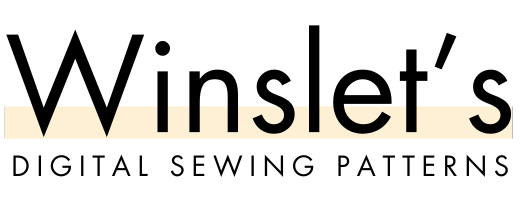
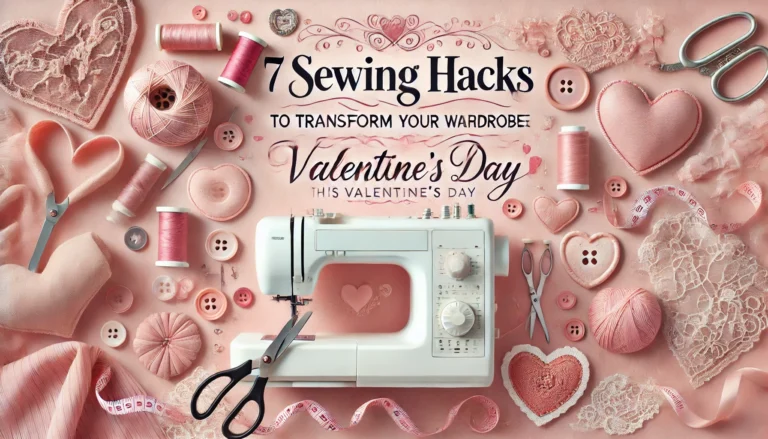
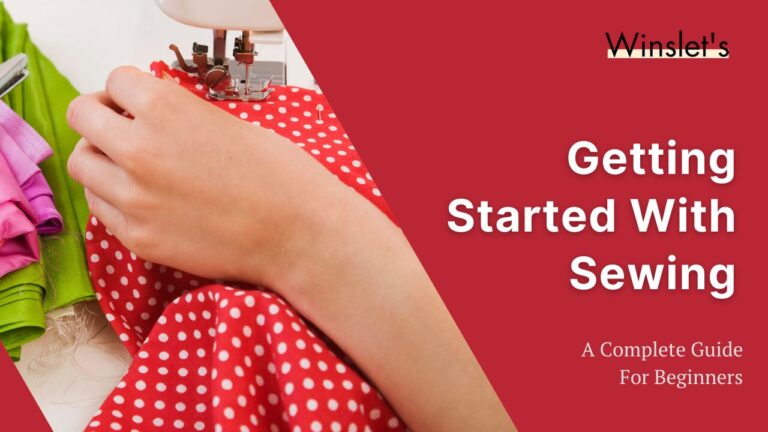
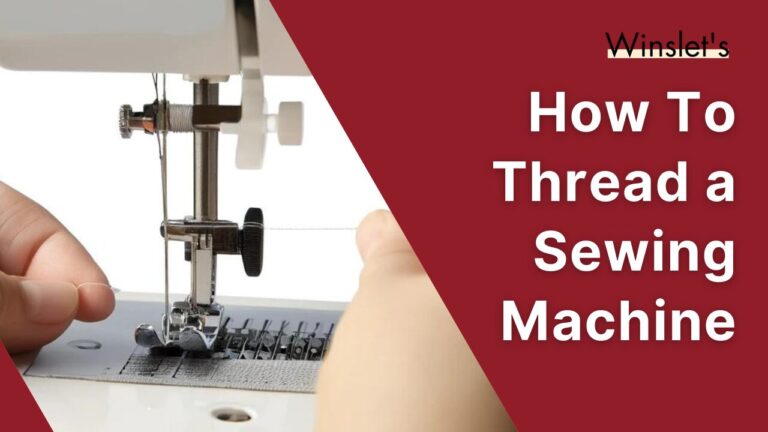
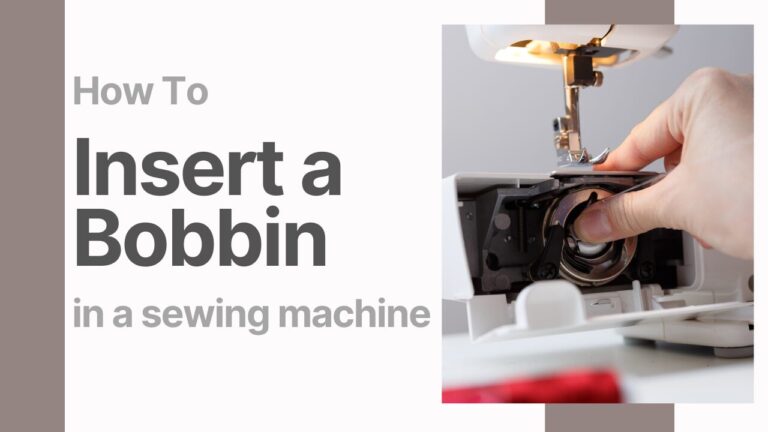
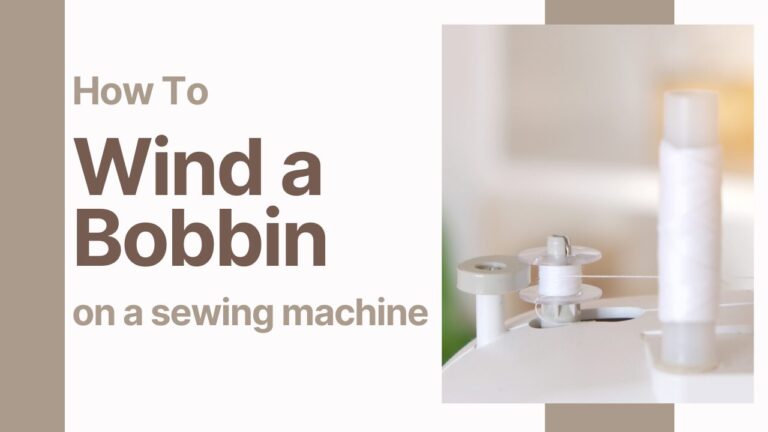
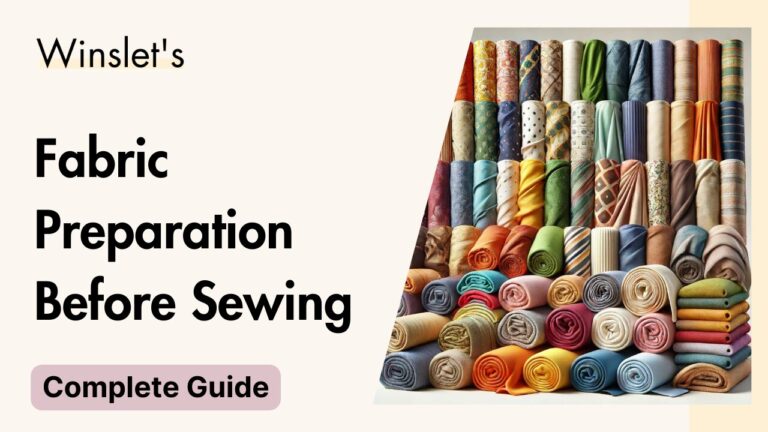
This teaches me and Inspires me a lot I wish for more.